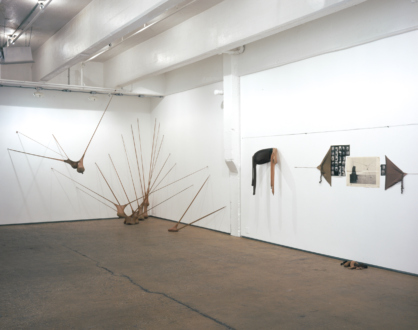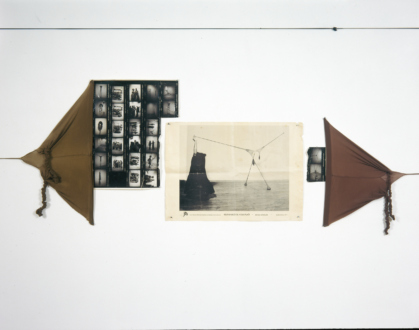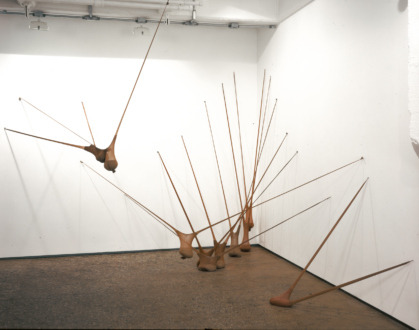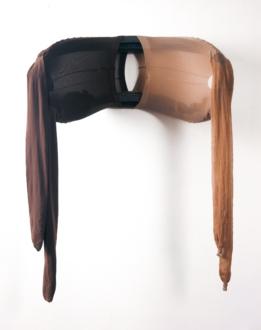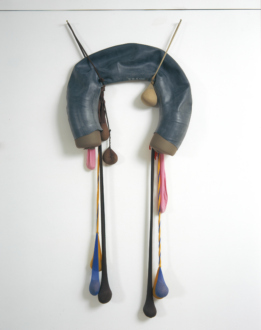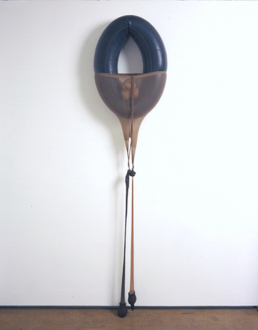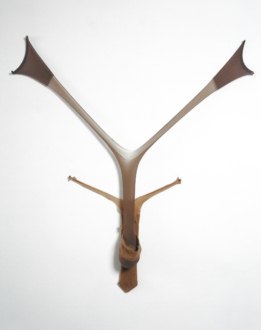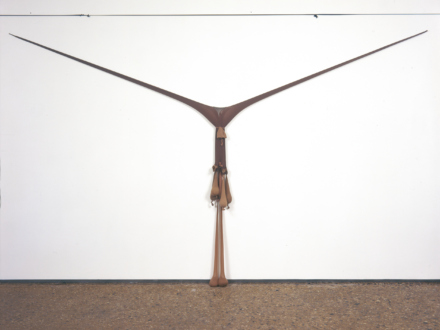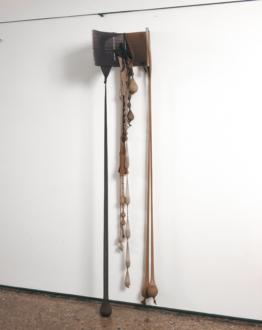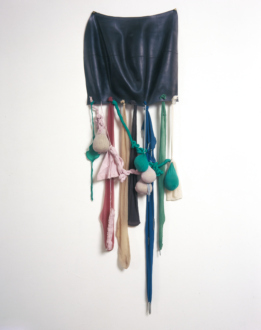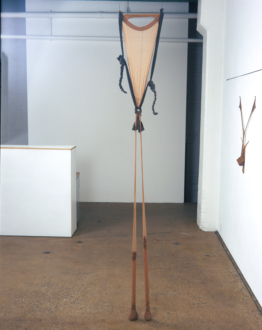Senga Nengudi – Répondez s’il vous plaît (Works)
Selected Works
Senga Nengudi
Senga Nengudi – Répondez s’il vous plaît Press Release
Thomas Erben is pleased to present a selection of Senga Nengudi’s seminal sculptures, generally referred to as R.S.V.P. – The Panty Hose Pieces, which she created between 1975 and 1977. Nengudi’s exhibition in 1996 inaugurated the Thomas Erben Gallery; a second show followed in 1997.
The wall piece sculptures and installations on view are made of previously worn panty hose, some of which are brightly colored. They are filled with sand, stretched in space and are sometimes combined with found rubber or metal pieces.
Nengudi refers to them as “abstracted reflections of used bodies – visual images that serve my aesthetic decisions as well as my ideas.” She further states: “I am working with nylon mesh because it relates to the elasticity of the human body – from tender, tight beginnings to sagging end. The body can only stand so much push and pull until it gives way, never to resume its original shape. After giving birth to my own son, I thought of black wet-nurses suckling child after child – their own as well as those of others – until their breasts rested on their knees, their energies drained.”
Examples from this series were initially exhibited in 1977 at Linda Goode Bryant’s Just Above Midtown Gallery (JAM), the first African-American run gallery to settle in New York’s then major 57th Street gallery district. Now considered legendary, the gallery presented from the mid ‘70s to early ‘80s experimental work by artists such as David Hammons, Senga Nengudi, Lorraine O’Grady, Houston Conwill, and later Fred Wilson and Lorna Simpson.
John Perrault in a review of this exhibition: “Nengudi is a discovery … as a critic, one waits for things like this … the works have to do with tensions and ‘tensions,’ with space and architecture and materials. But above all they have to do with emotions, without being sentimental. The anthropomorphic is so stretched out, from wall to wall, from floor to ceiling, that the abstract and the personal and the sociological are perfectly wed. This is feminist type of art of the highest order. And yet it is abstract, sort of.”
In the autumn of 1977 and again in 1978, pieces were shown at the Woods Gallery, Los Angeles. They were included in exhibitions such as Afro-American Art in the 20th Century (1980, Bronx Museum of Art; traveling) and have been widely reproduced in catalogues (including: Contextures 1978, and Art As A Verb 1988), books (The Artist’s Body Phaidon Press, 2000) and magazines (such as: New Observations, 1993; NKA, 1997 and Artforum, 2002). Historically important, the artist reconstructed the pieces for this show.
Nengudi’s multidisciplinary work employing installation, performance, photography, drawing and radio, is seen as part of the most provocative avant-garde black art of the ‘70s and early ‘80s (see Greg Tate, Village Voice, December 1996). Her work has been exhibited in major international exhibitions such as Between Performance and the Object, 1949-79 MoCA, LA, and NowHere/Incandescent Louisiana Museum of Modern Art, Humlebaek, Denmark. It has also been shown at many national venues including the Museum of Contemporary Art, Chicago; Capp Street Project, San Francisco; and in New York’s Artists Space and Studio Museum in Harlem.
Reviews
Reviews
- Cash, Stephanie. Senga Nengudi at Thomas Erben, Art in America, March 2004 | Download PDF | 483.04 KB
- Dailey, Meghan. Senga Nengudi: Thomas Erben Gallery, ArtForum, November 2003 | Download PDF | 485.81 KB
- Levin, Kim. Stretch Marks: Rediscovering 'legendary' Senga Nengudi, The Village Voice, October 2003 | Download PDF | 322.50 KB
- Senga Nengudi, The Village Voice, September 2003 | Download PDF | 174.33 KB
